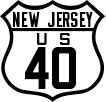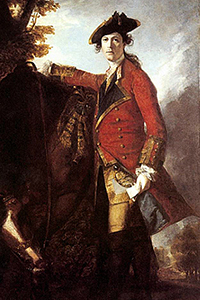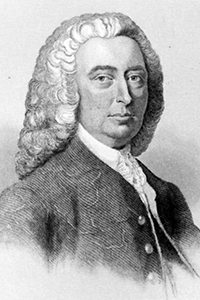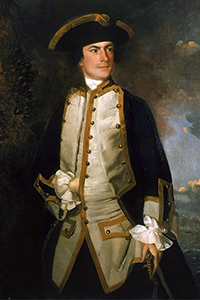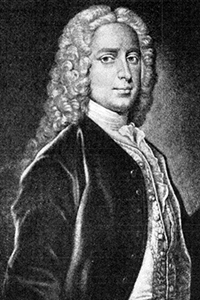Part 1
Previous Page | Next Page | Introduction | Part 1 | Part 2 | Part 3 | Part 4 | Part 5 | Part 6
On September 24, 1754, Major-General Edward Braddock was appointed by the Duke of Cumberland, captain-general of the British Army, to the command of the British troops to be sent to Virginia, with the rank of generalissimo of all of his Britannic Majesty's forces on the American continent. Before his expedition could start, however, many weeks had to be spent in extensive preparations, a delay which became so irksome to Braddock that he determined to wait no longer on the tardy movement of the transports. Accordingly, on December 21, 1754, accompanied by Captain Robert Orme, one of his aides, and William Shirley, his military secretary, he set sail for Virginia with Commodore Augustus Keppel, and on February 20, 1755, anchored in Hampton Roads. It was not until January 14, 1755, that the rest of the ships were actually under sail, and not until about March 15 that the entire fleet arrived at Alexandria, Virginia, where the troops were disembarked and temporarily quartered.[1]
Meanwhile General Braddock had been busy making the necessary preparations against Fort Duquesne. As a matter of first importance, he had written to the governors of the several provinces asking them to meet him at council at Alexandria; and to the five who responded to his invitation on April 14 he submitted various proposals, to which they in turn made formal answer.[2]
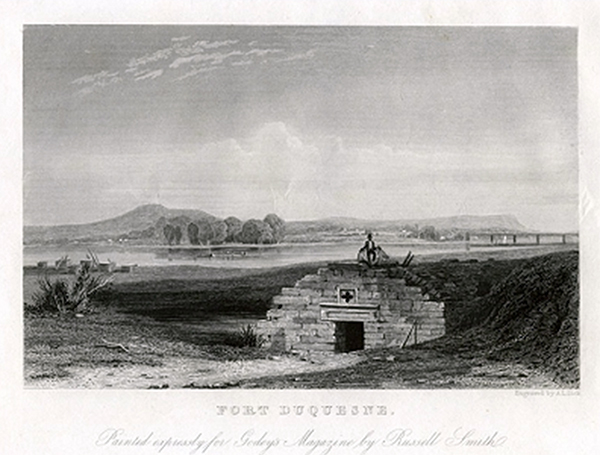
Fort Duquesne
Already, however, two days prior to the conference with the governors, the advance column of the army, after much delay caused by the lack of horses and wagons, had set out from Alexandria. The first objective point was Wills Creek,[3] to which two regiments of the army proceeded by different routes, Sir Peter Halket's through Virginia via Rock Creek and Winchester, Colonel Thomas Dunbar's through Maryland via Fredericktown and thence across Conogogee and into a road five miles north of Winchester. From this point both divisions seem to have marched over the same road to Fort Cumberland.[4] Still further delays were occasioned by the want of wagons and horses for transportation, as well as by the lack of provisions; but by the 19th of May practically all the forces were encamped at the fort, a total of some 2100 men. It had thus taken twenty-seven days to march from Alexandria to Fort Cumberland, a distance of 180 miles; and, one may remark in passing, all the delays up to this point had been occasioned by circumstances over which Braddock had practically no control. He did not reach Fort Cumberland himself till May 10.[5] Then he lost no time giving his attention to three matters which were of great significance to the success of his expedition, - (1) the Indian question, (2) the arrangements about wagons and provisions, (3) the construction of a road through Pennsylvania to serve as a means of connection with the base of supplies.
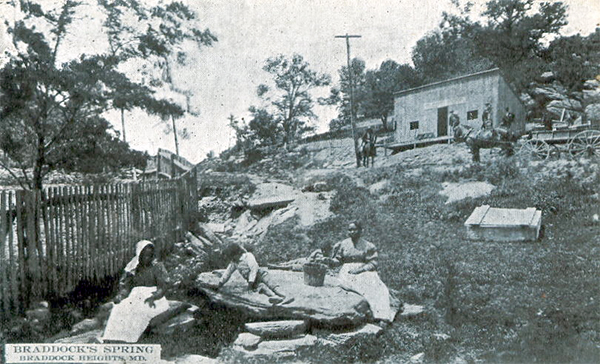
Braddock's Spring, Braddock Heights, Maryland
Footnotes
[1] Charles C. Coffin, Old Times in the Colonies, 377.
[2] The five governors were William Shirley of Massachusetts, James De Lancey of New York, Robert Hunter Morris of Pennsylvania, Robert Dinwiddie of Virginia, and Horatio Sharpe of Maryland. The council was held at the Carlisle House, often called the Braddock House, which is still standing. For the answers of the governors, see Documentary History of New York, II. 648-651.
[3] Fort Cumberland, situated on the west side of Wills Creek, was erected and garrisoned during the winter of 1754-5 under the supervision of Colonel James Innes, who called it Fort Mount Pleasant. The name was changed to Fort Cumberland in 1755 by order of General Braddock. Today the Emanuel Episcopal church occupies part of the ground of the old fort, which was situated on a bluff rising from the creek.
[4] See Winthrop Sargent, History of an Expedition against Fort Du Quesne, 366-373. This monograph was published by the United States in1855 by the Historical Society of Pennsylvania. The first 280 pages contain an introductory memoir by Sargent; pages 281-358 include the journal of Robert Orme, one of Braddock's aides-de-camp (this is the only American edition of Orme's record), and pages 359-389 the journal of a naval officer which is very frequently referred to as the Seaman's Journal. Of this second journal there seem to be two texts, one preserved in the Royal Artillery Library at Woolwich, England (printed in Hulbert's Historic Highways of America, IV, 83-107), the other in the possession of Rev. Francis-Orpen Morris of Newburnholm Rectory, Yorkshire, to whose father it was given by Captain Hewitt. The second text is the one published by Sargent, but the variations between the two manuscripts are unimportant for the present purpose. This paper refers to the Sargent edition of the second journal under the caption Seaman Journal; and in citing the Orme Journal it will also use the pagination of Sargent.
[5] On this day Washington was appointed an aide-de-camp to Braddock.
Previous Page | Next Page | Introduction | Part 1 | Part 2 | Part 3 | Part 4 | Part 5 | Part 6
View user comments below.
|
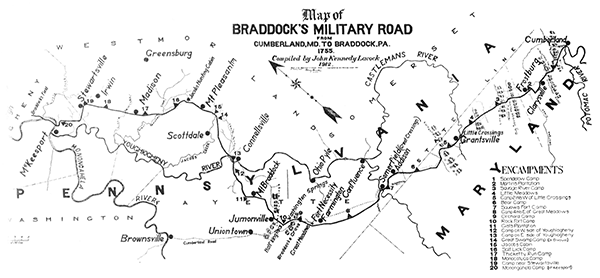 |
 |
Lacock's map of Braddock's Road. Click here for a larger display.
|
|
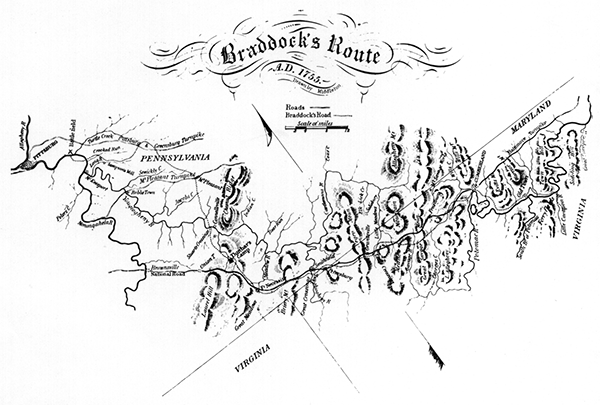 |
 |
Middleton's map of Braddock's Road (and challenged by Lacock). Click here for a larger display.
|
